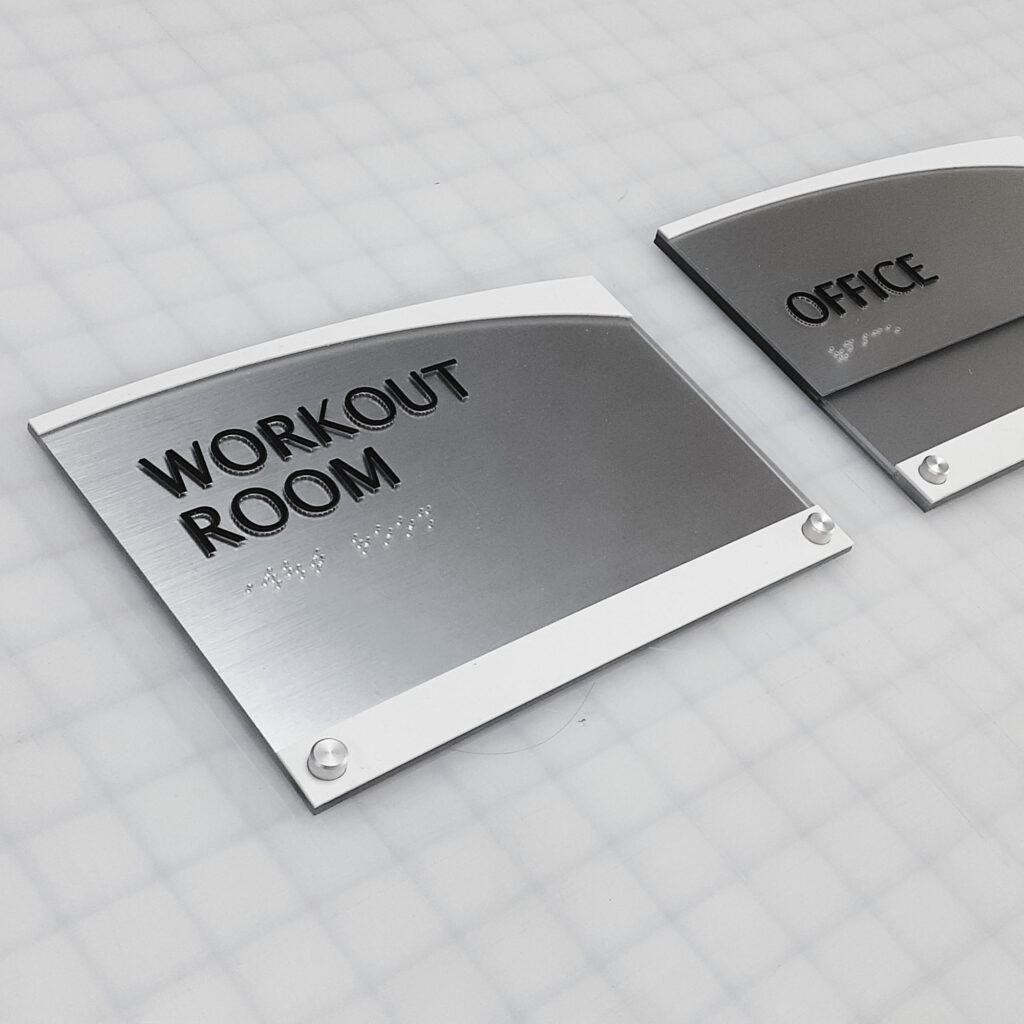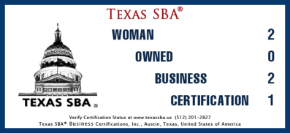One way business premises and public spaces create an inclusive environment for their visitors is by ensuring accessibility for all people. This involves ensuring everyone, especially people with disabilities, can safely navigate, utilize, or access facility services. ADA compliance signs and labels have greatly enabled most facilities to achieve this goal.
They provide vital signs for people with disabilities in accessible formats. Do you need ADA compliance signs and labels in Fort Worth and the surrounding areas? Look no further; at OakSpy Signs & Graphics, we provide businesses with quality custom signage solutions to enhance their brand reputation and visibility. Meanwhile, continue reading to learn more about ADA signs and labels, including their benefits and design considerations.
Understanding ADA Compliance Signs and Labels
Title 111 of the ADA Act prohibits discrimination against people with disabilities in businesses such as movie theaters, daycare facilities, recreation facilities, medical clinics, and hotels. It further requires that such companies provide equal access and services to those with disabilities. To comply with the regulations in this act, business facilities, and premises must have certain signs and labels to enhance the safety and movement of individuals with disabilities.
Types of ADA Signs and Labels
One of the most common ADA compliance signs and labels you might be familiar with is the International Symbol of Accessibility (wheelchair) or the blue “handicapped parking” sign. Other typical ADA signs and labels include Braille signage, restroom signs, exit and evacuation signs, and informational Signs.
Compliance Standards and Regulations for ADA Signs and Labels
The ADA provides the following requirements and regulations to ensure that labels are readable or accessible:
- The signs and labels should be placed in areas with minimal reflections and glare, unless in areas such as parking or traffic signage. Individuals with light sensitivity may find it hard to read highly reflective signs.
- Signs giving directions to permanent locations must have Grade 2 Braille, circular Braille dots, and tactile characters. This makes it easy for visually impaired people to navigate with ease.
- The ADA requires the signs and labels to be mounted in easily accessible locations or at specific heights accessible to all people with disabilities, including those in wheelchairs.
- Finally, the signs and labels should have a high contrast ratio between characters and backgrounds. A high contrast ratio of about 70% creates a clear differentiation between characters and background, which enhances readability.
Benefits of ADA Compliance Signs and Labels
Besides enhancing safety and navigation for our loved ones with disabilities, ADA compliance signs and labels help in:
Promoting Inclusivity and Equal Access
Well-designed and mounted signs help people with disabilities, especially those with visual impairments, easily understand directions and warnings. This allows them to move to spaces, gather information, and acquire services like everyone else in the business facilities.
Enhancing the Customer Experience
Creating an inclusive business environment makes all your customers, including those with disabilities, feel welcome and valued. This ultimately enhances the customer experience, sets your business apart, and leads to long-term success.
Legalities and Cost-Effectiveness
Failure to comply with ADA guidelines, including signage, could result in hefty penalties, fines, and legal action from the U.S. Department of Justice. The fines typically range from $75,000 to $150,000.
Implementing and Maintaining ADA Compliance Signs and Labels
One of the factors that you should consider while implementing and maintaining ADA labels is their design. This includes their font size, color contrast, colorblindness, etc. For instance, the font should be large enough for individuals with low vision or visual impairments to read from a distance. Also, as mentioned above, the contrast ratio between the lettering and the background should be around 70% for clear differentiation. Besides the sign and label design, it is essential to maintain proper placement and installation. This means they should be placed at accessible heights and where they can be seen clearly and easily.
Invest in Accessibility With ADA Compliance Signs From OakSpy Signs & Graphics
ADA compliance signs and labels are essential components of your business. They make it safe and easier for people with disabilities to access your business and can also save you from costly legal consequences.
At OakSpy Signs & Graphics, we specialize in designing and installing impactful ADA compliance signs and labels in Fort Worth and the surrounding areas. Our expert team understands all legal requirements for ADA signage, ensuring your business operates smoothly. Call us today for any ADA signage, including Braille signs, hazard alerts, safety signage, wayfinding markers, and more.








